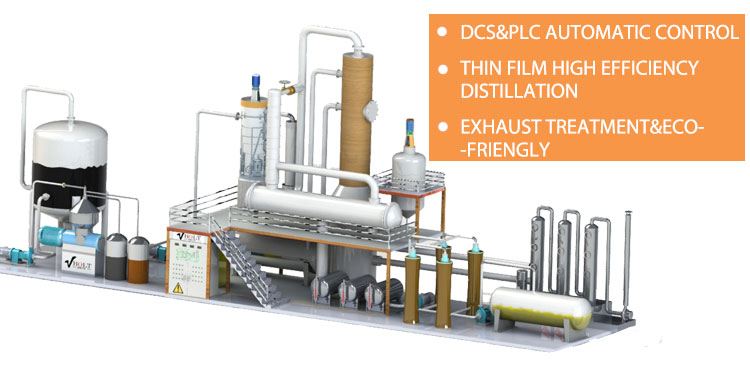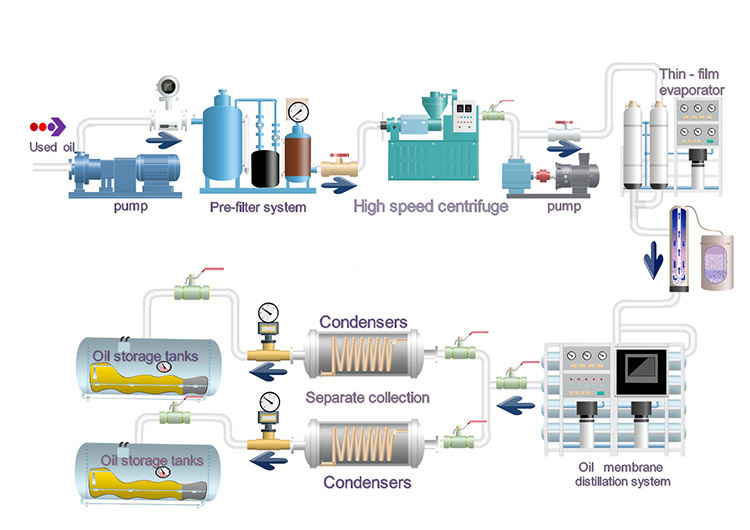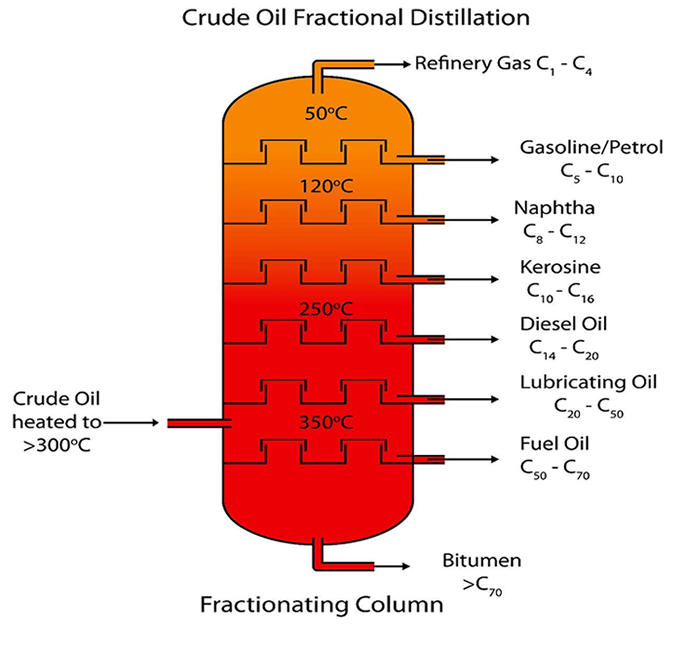
The use of waste engine oil is one of the important measures to save oil. As long as the waste engine oil is carefully collected, stored and then regenerated, the waste engine oil is fully usable.
To make good use of waste engine oil, first we must collect and keep the waste engine oil. The quality of waste engine oil collection is directly related to the effect of processing regeneration and utilization. For example, if it is difficult to restore the original quality by mixing grease or gear oil in the waste gasoline engine oil, it is not suitable for recycling. Therefore, the following points should be noted when collecting used oil:
- The container for storing waste engine oil should be cleaned. The container should have a closed lid and gasket to prevent further oxidation or evaporation of the oil to prevent external pollution.
- Different types of waste oil should be stored separately. Do not mix the waste oil into the following categories:
—Waste gasoline engine oil
—Waste diesel engine oil
—,(diesel, gasoline)
—Waste gear oil
—Waste grease
- The name of the engine oil should be marked on the waste engine oil container for identification, and the waste oil drum should be stored separately from the good oil drum to avoid confusion.
(4) During the storage process, waste engine oil should not be moved as much as possible to facilitate the precipitation of moisture and debris.
(5) When storing waste engine oil, do not let the cotton yarn mix or mix the animal and vegetable oil in the oil.
(6) Fireworks shall be strictly prohibited in the place where the waste engine oil is stored, and exposure to sunlight and freezing shall be prevented to avoid a fire or further deterioration of the waste oil. Some waste engine oil can be used without regeneration. For example, the waste motor oil after precipitation can be taken up in the air filter. Clarified gasoline, kerosene, and diesel oil can be used as engine oil (oil that cannot be used as a precision instrument).
The waste oil needs to judge the availability of waste oil according to the oil environment, oil level and procedures. Good waste oil is very different from poor waste oil, and there are great skills in how to distinguish waste oil.
The basic identification of waste oil is no water. There are five major indicators that can be measured by methods such as “Four Diagnostic Methods of TCM”. The five indicators include moisture, color, impurities, density, and taste.
Moisture: The most important indicator of waste oil is to look at its water, which is what the waste oil people often say “there are several waters.” Moisture is generally caused by rain, improper operation or unsuitability of the operating environment. Usually the lower the water, the better, of course, the more expensive the price. At present, there are professional water measuring instruments in the industry. If you don’t know how to judge the moisture of the oil through common sense and experience, you can use the instrument.
When machinery and equipment are working, the oil is affected by the surrounding air, temperature, pressure, electric field, light and other factors due to long-term contact with the metal, The foreign matter is gradually added to the oil, and as a result, there are moisture, dust, sand, metal chips in the oil, and gradually oxidize in the long-term use, so that the chemical composition changes, and the deteriorated substances and harmful impurities are generated.


